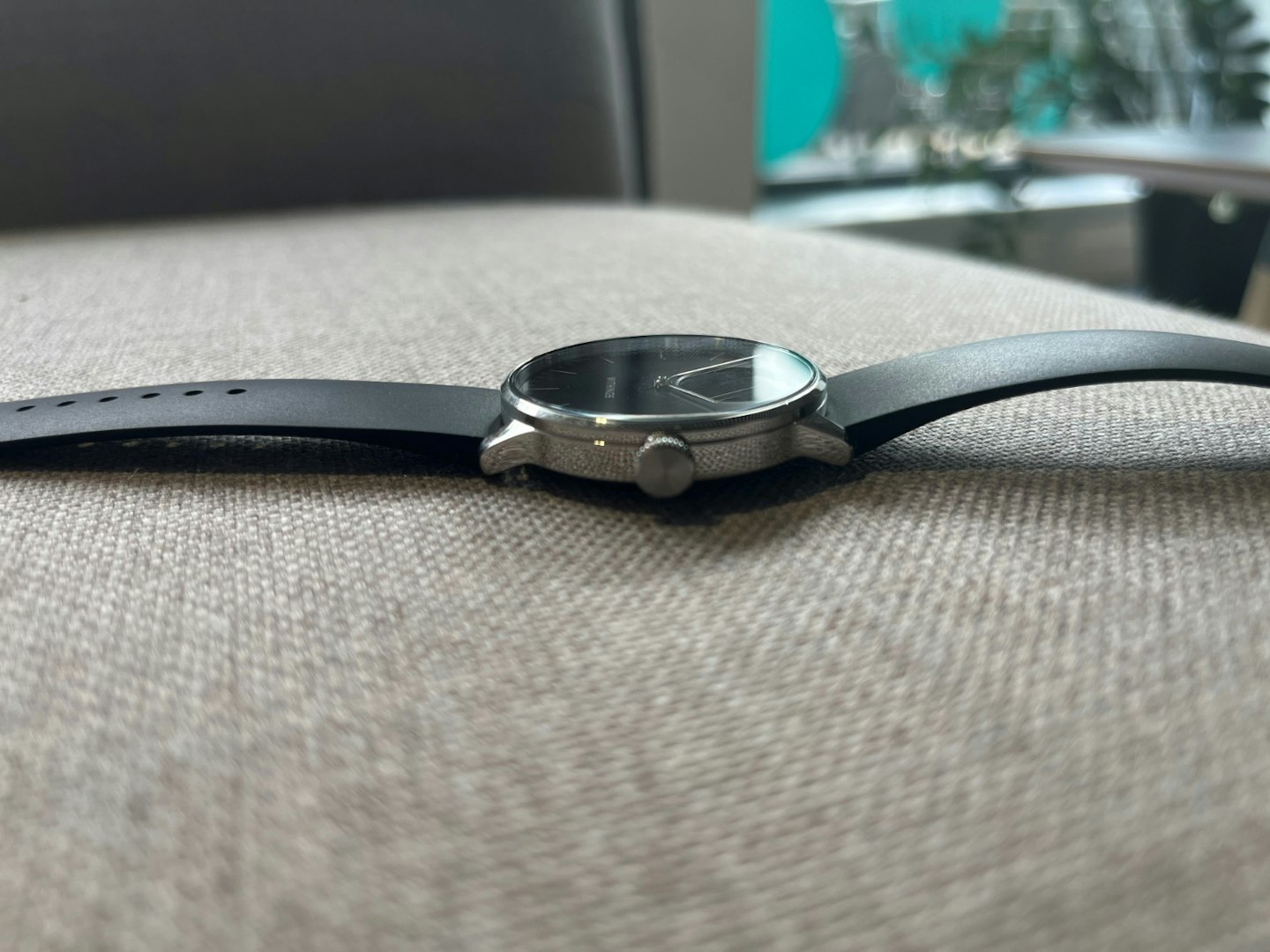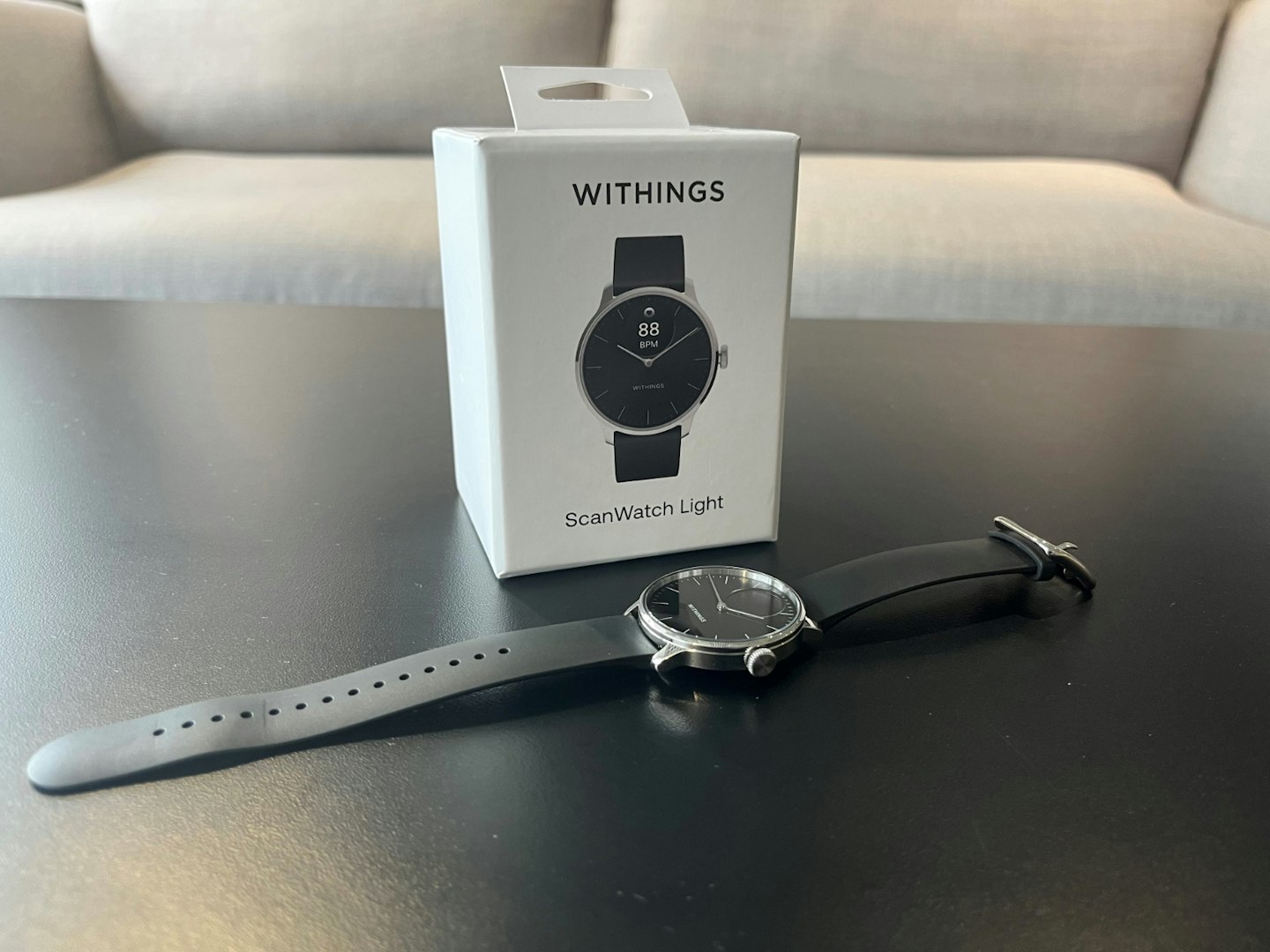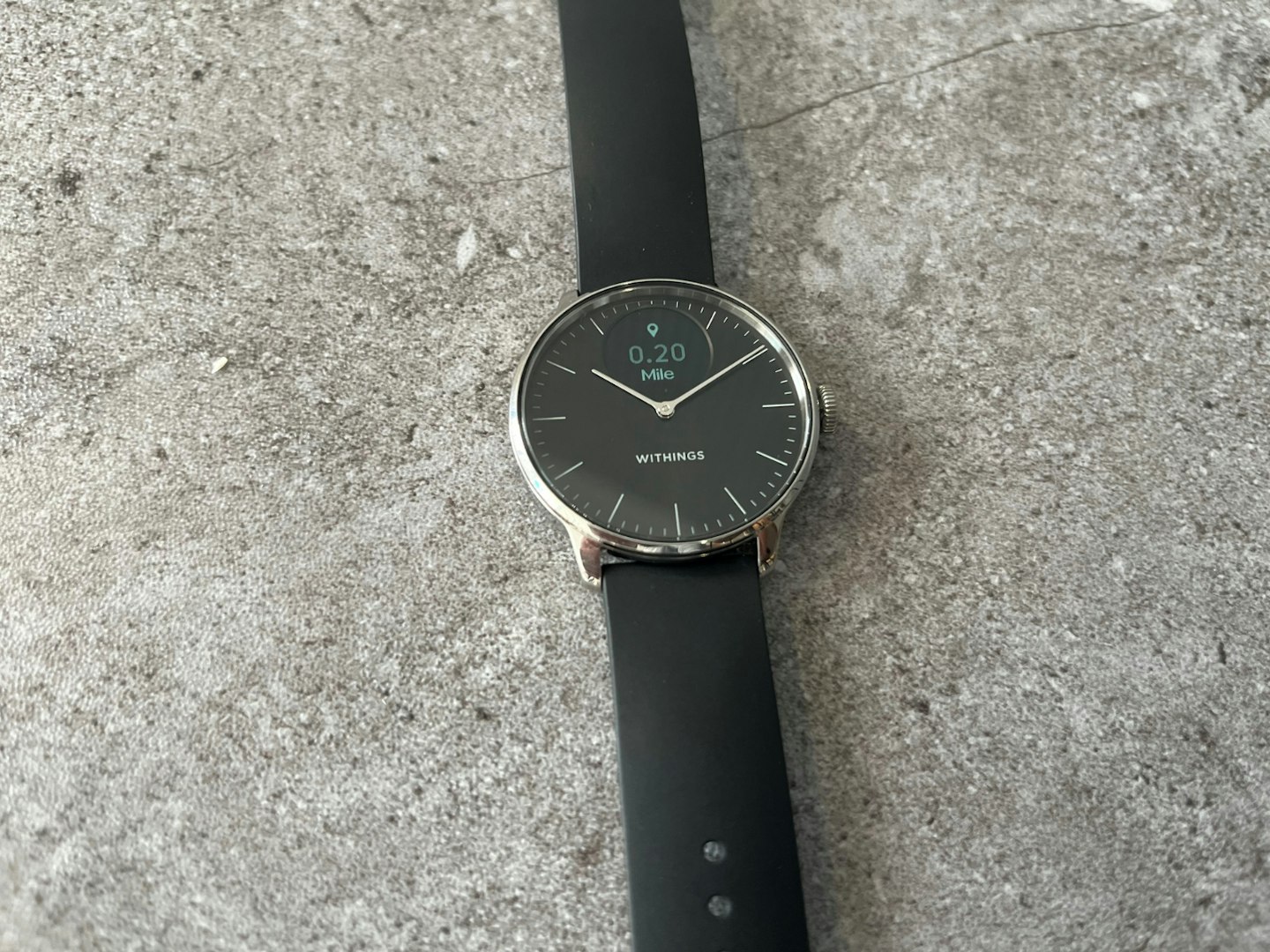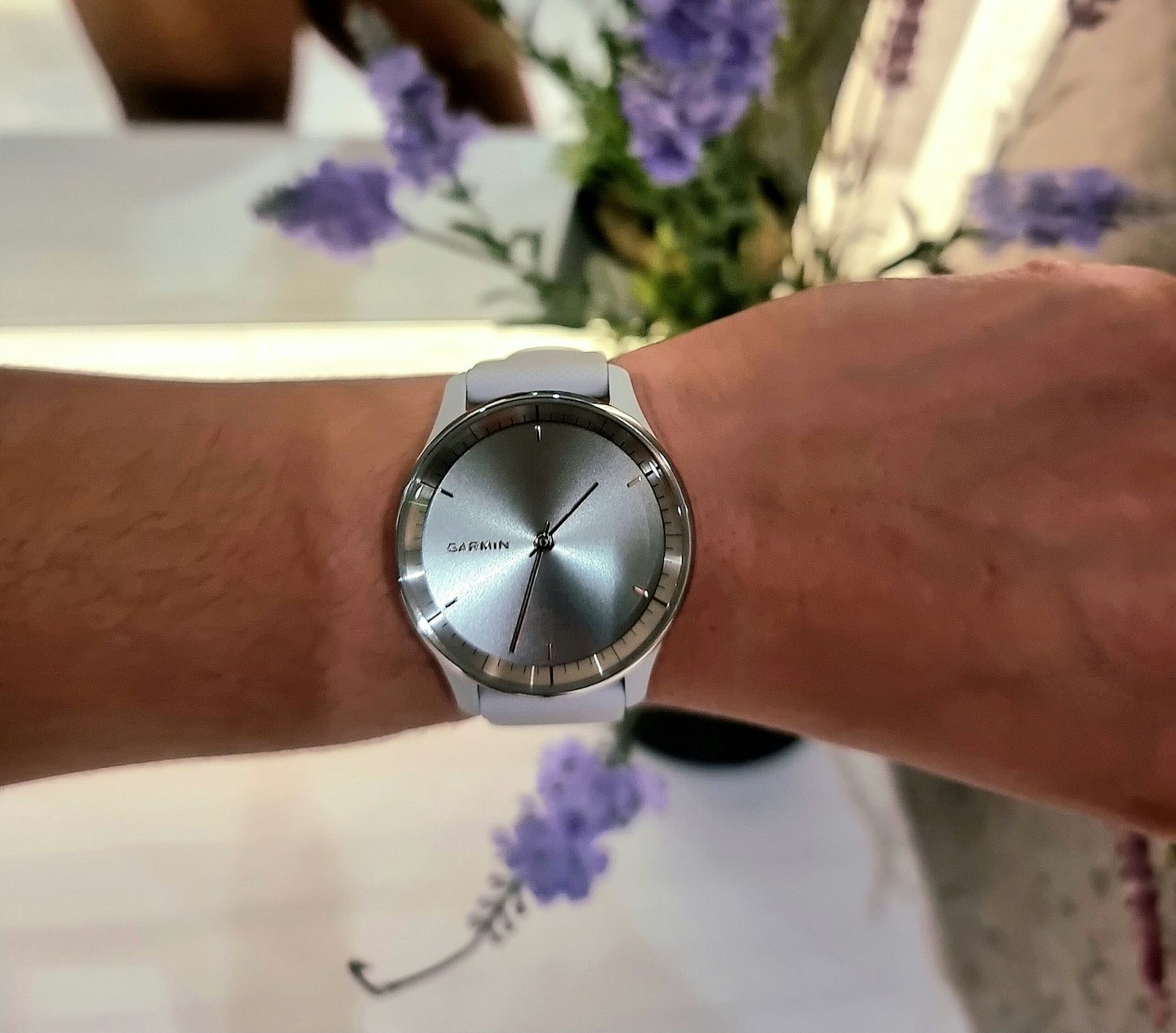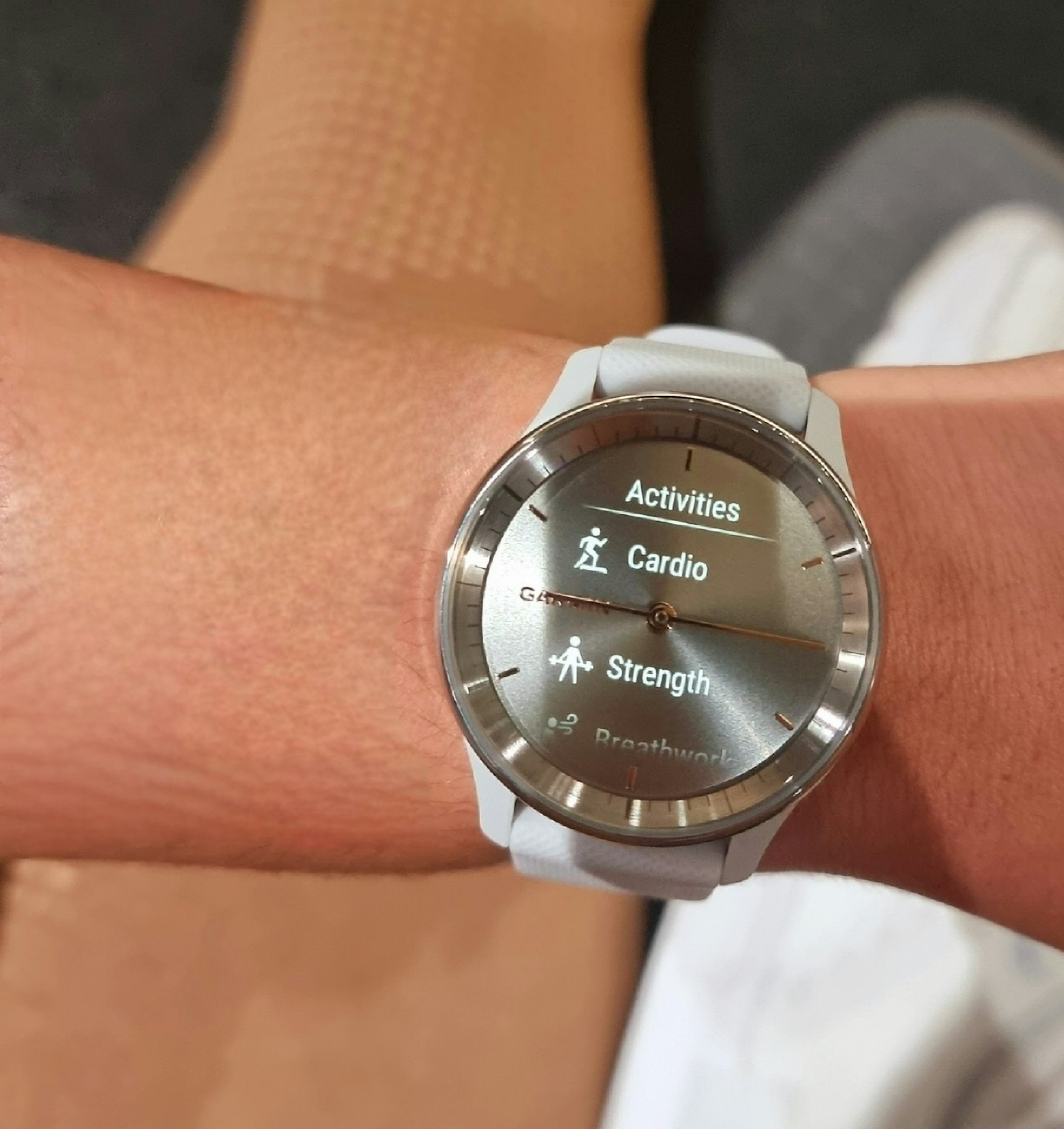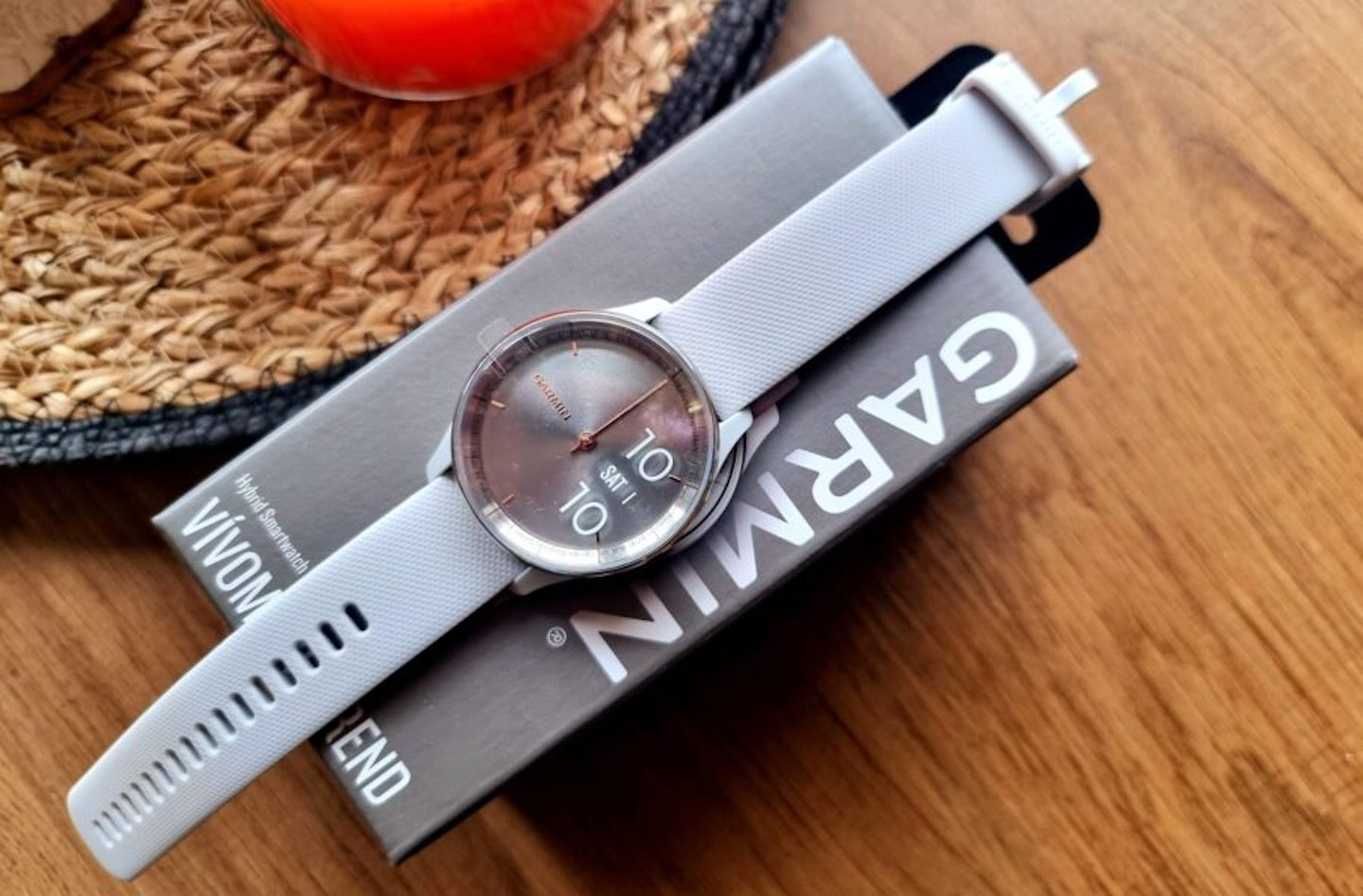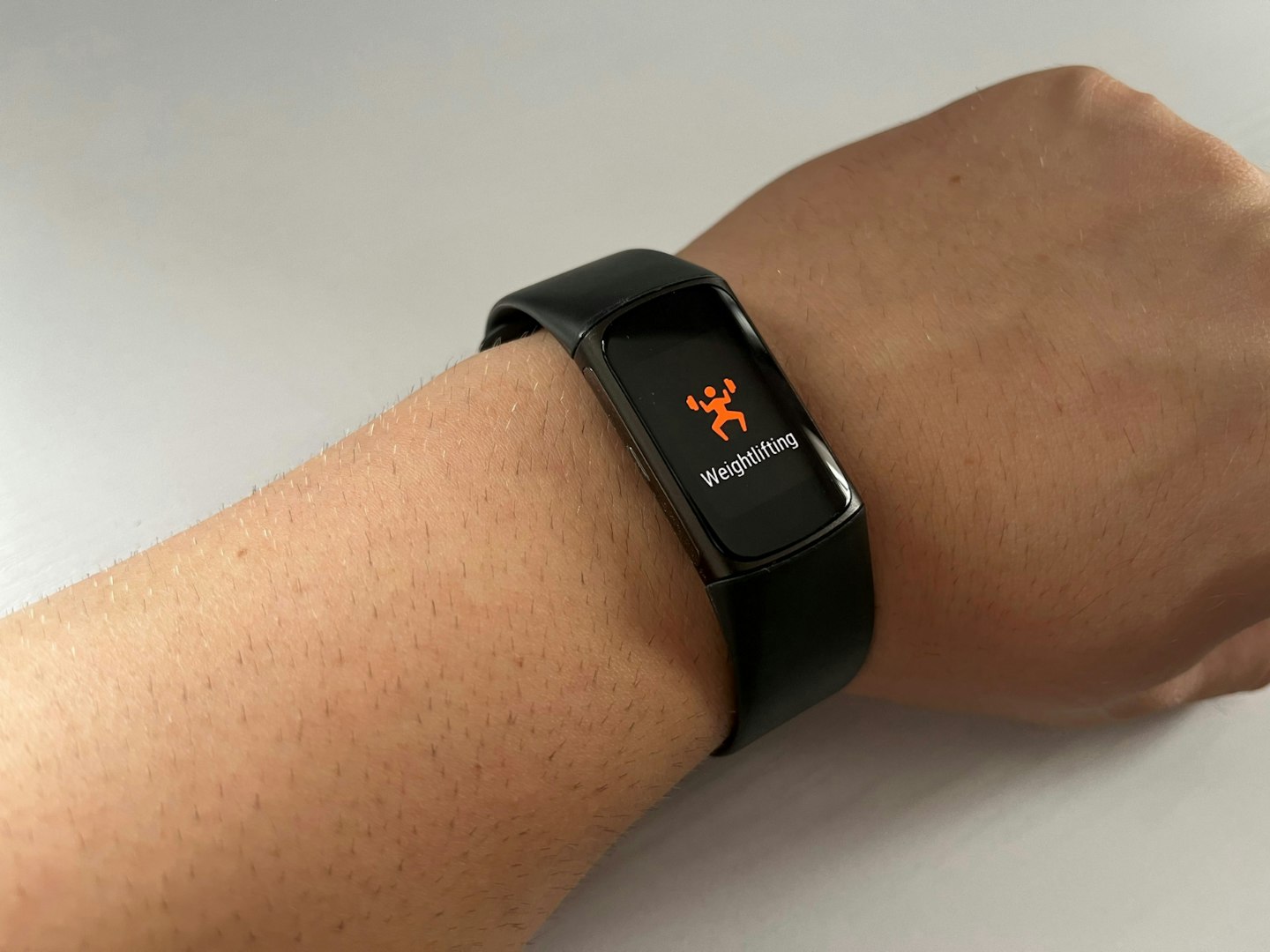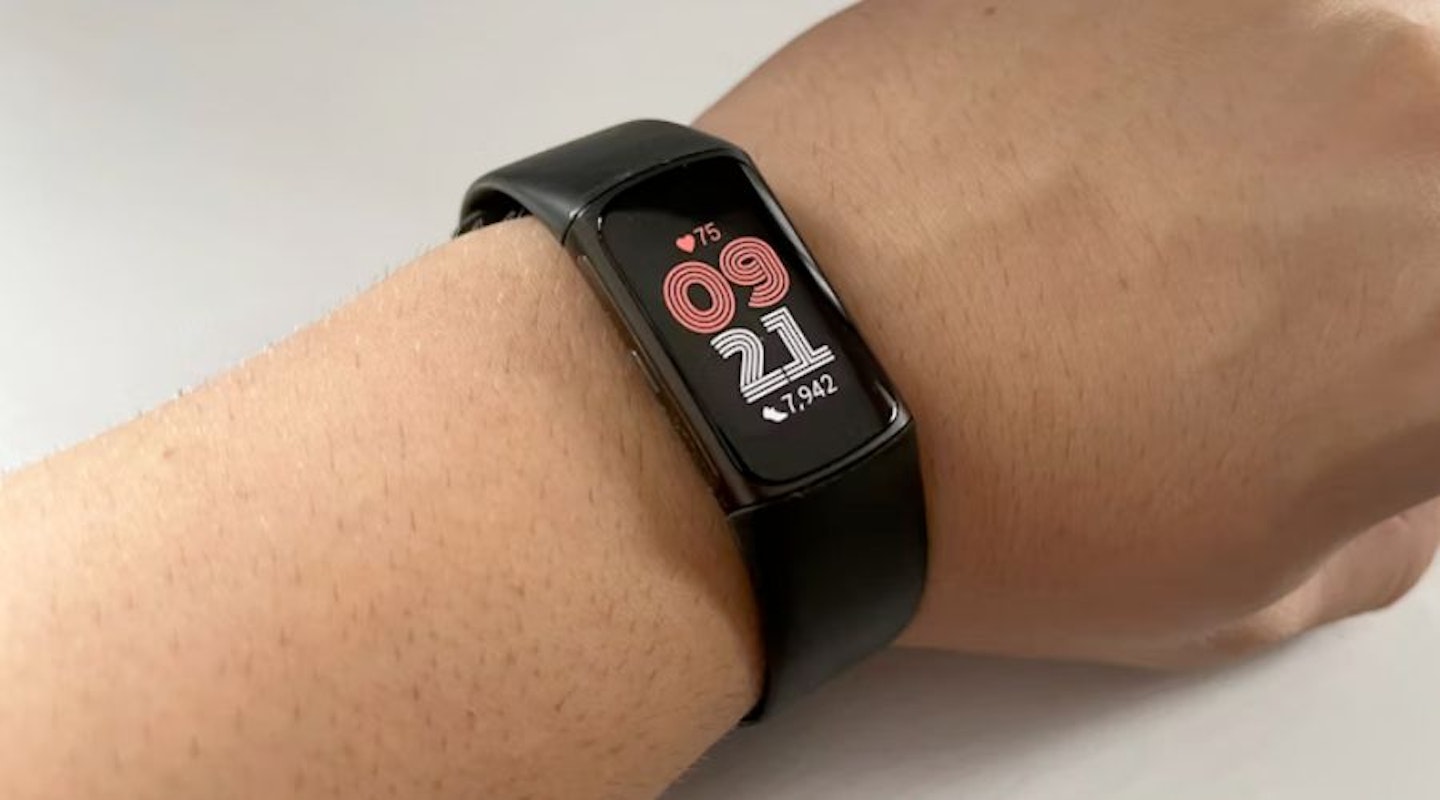For anyone who wants the elegance of a traditional timepiece, and the health and fitness tracking of the best smartwatches, a hybrid smartwatch could be the answer. The Withings ScanWatch 2 is the latest flagship device from the French brand that pioneered hybrid devices.
Founded in 2008, Withings launched its first analog smartwatch – the Activite – that year, and has released several models in the years since, including the first ScanWatch in 2020. Alongside the ScanWatch 2, Withings has also released the ScanWatch Light, a cheaper, slightly less feature-filled hybrid smartwatch.
Withings as a brand is focused on health, and the ScanWatch 2 promises more advanced health tracking than ever. New features include all-day temperature tracking - a world first – as well as a plethora of other health and fitness tracking metrics.
Hybrid smartwatches are undoubtedly something of a niche product. They lack the range of functions and the large digital displays of true smartwatches like the Apple Watch Series 10. But they also typically cost more than a conventional fitness tracker such as the Fitbit Charge 6. The question is, does the ScanWatch 2 do enough to make it a viable alternative to any of those other products?
Senior Tech Writer and Reviewer Steven Shaw wore the ScanWatch 2 to see whether it delivers on what it promises.
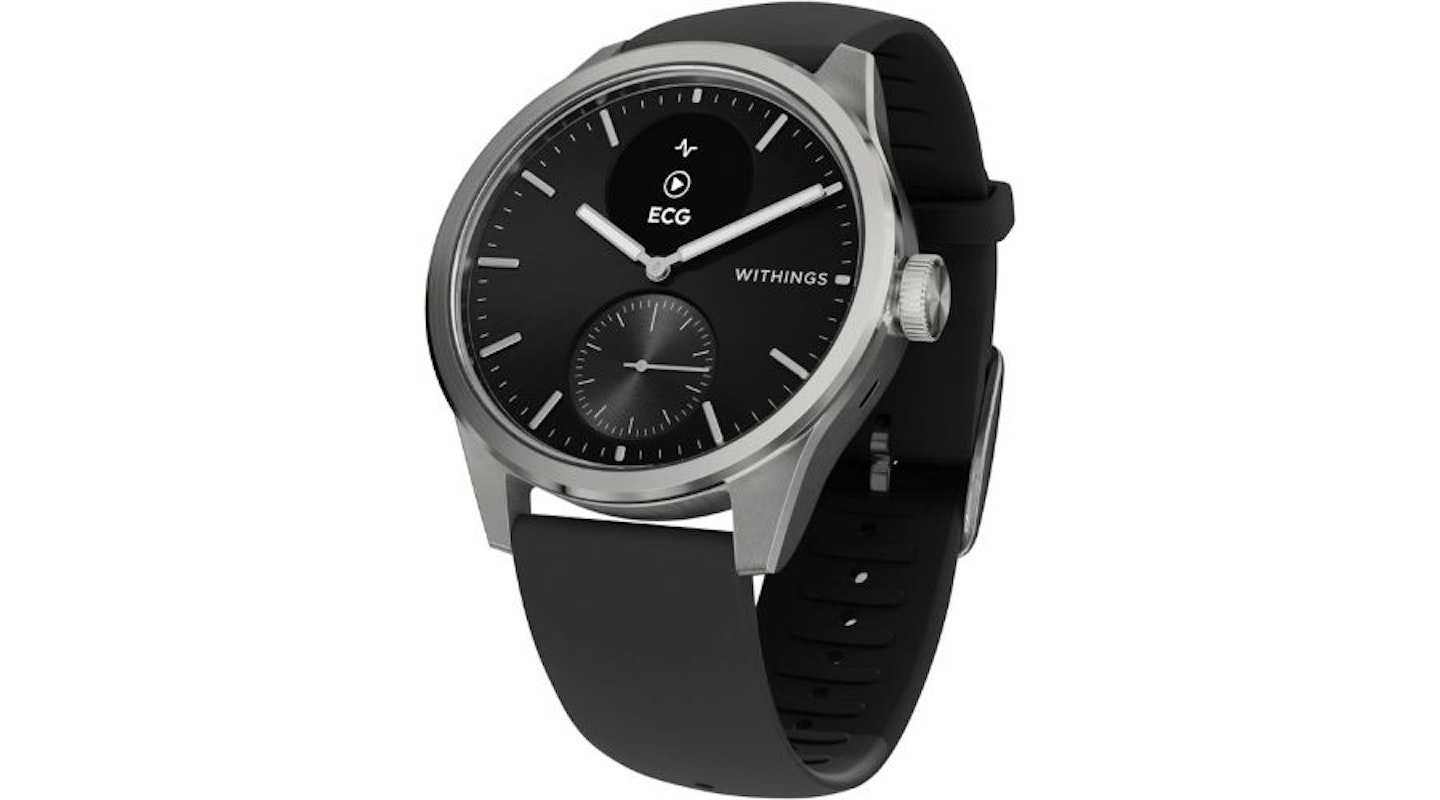 Withings
WithingsPros
- Beautiful, classic design
- Lots of health tracking features
- All-day temperature tracking could be useful
Cons
- Fairly limited fitness tracking
- Not the most accurate
- No built-in GPS
| Display | 0.63-inch Grayscale OLED display, 282 PPI |
| Battery Life | Up to 30 days |
| GPS | Connected GPS only |
| Water Resistance | 5ATM |
| Compatibility | iOS and Android |
| Dimensions | 38mm or 42mm |
| Weight | (without strap) 34.6 grams (38mm), 52,6 grams (42mm) |
Timeless design
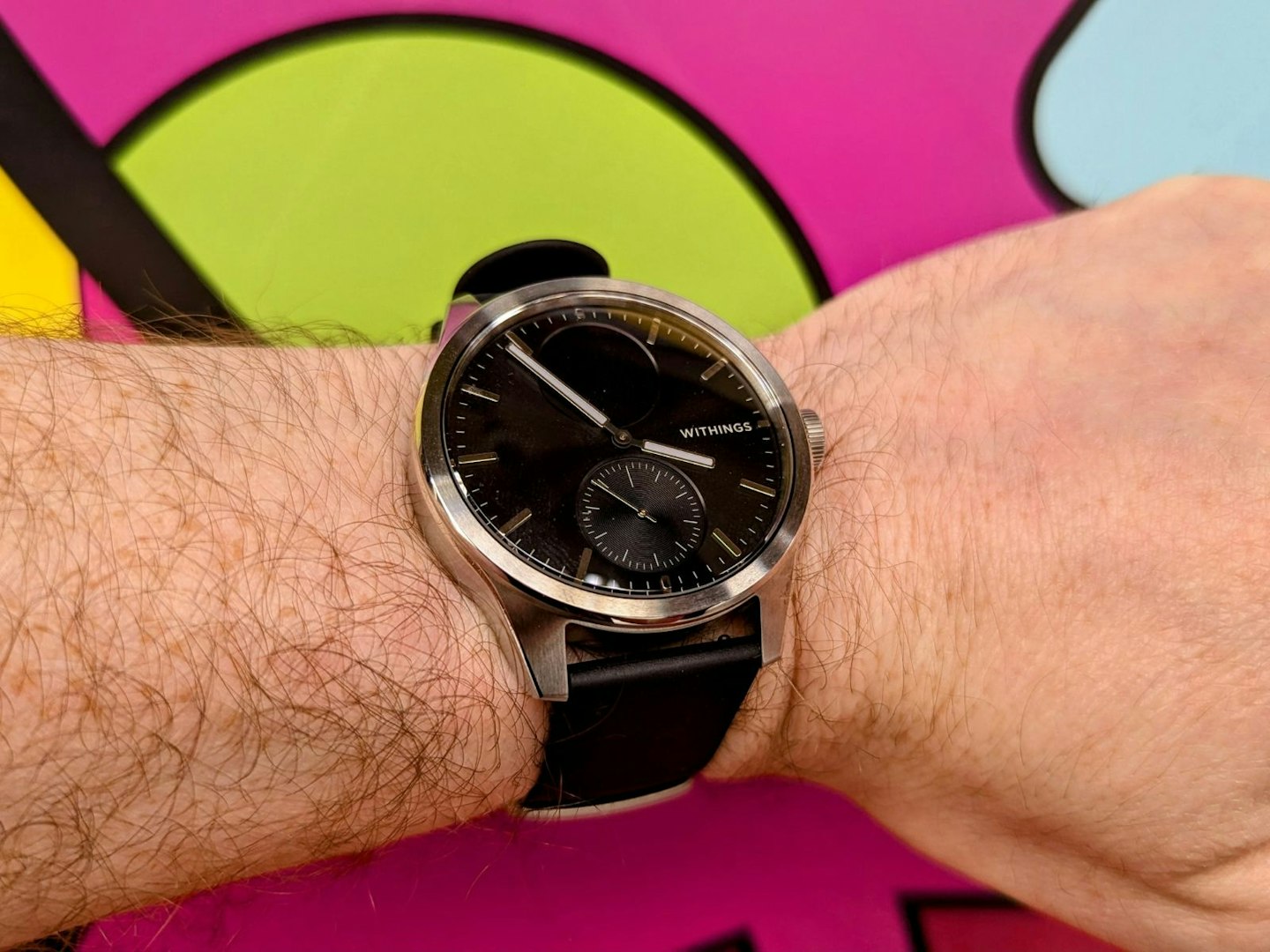
As with any hybrid smartwatch, the design principle stays the same: to build a watch that looks and feels like a traditional analogue timepiece. And in that regard, Withings does an exemplary job. I've been a fan of Withings watches for years, precisely because I can wear an elegant device, and still benefit from the health and fitness tracking found on more typical smartwatches.
The ScanWatch 2 hasn't changed that much from the original ScanWatch in terms of design. It comes in two sizes – 38mm or 42mm (I tested the 42mm version). There are also several colour combinations, and a wide range of easily swapped wristbands to choose from. The fluroelastomer band I wore isn't as supple as the bands I wore on the previous ScanWatch, but it's still comfortable.
It feels like a premium product, and the materials used to make it reflect that. Sapphire glass, plus a stainless-steel case and crown, make this durable. It's also water resistant to 50 metres, so it's fine to take it for a swim in the pool.
There are two circles within the watch face. The top one houses a small grayscale OLED display, which you can navigate through by using the crown on the side of the watch. The bottom circle has a complication which can be used to track your steps through the day and show you how close you are to reaching your goal. Navigating such a small screen using the crown can be a little fiddly, and reading notifications on that display isn't as easy as on other devices. But then again, that's sort of the point.
It's a simple, clean design that looks like a classic timepiece. If looks matter in your choice of watch, this one will appeal.
Seamless setup
As well as a beautifully designed watch, the setup process is similarly streamlined. Once you've downloaded the app and created an account, the app can automatically detect the watch. After tapping "Pair new device" and connecting them via Bluetooth, the watch required a software update that took less than three minutes to install.
You'll also need to calibrate the watch hands to check they are pointing in the right place, to make sure it's telling the time correctly. But it's a very straightforward process, which took under 10 minutes in total from start to finish.
Health focused features
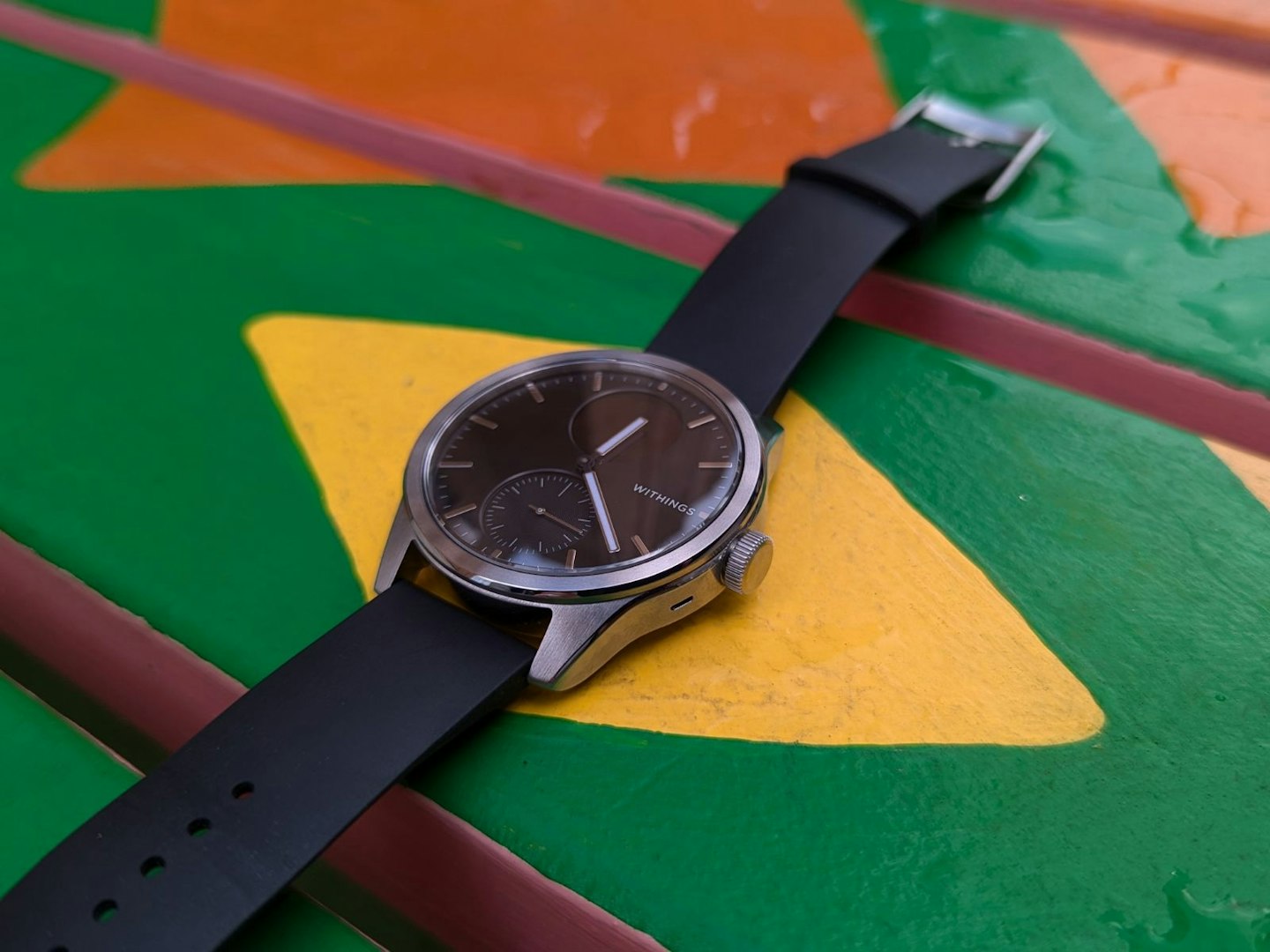
I would describe the ScanWatch 2 as a health monitoring device that also does fitness tracking. It's not as comprehensive as the best Garmin watches, for example. Those offer far more training and performance metrics than this. But, if you want some general fitness tracking, and some advanced health metrics, this watch will likely appeal.
Turning up the temperature
The new headline feature is the TempTech24/7 module, which tracks changes in your body temperature all day, every day. Withings claims this as a world first, as most smartwatches and trackers that offer temperature tracking, only do so at night.
An elevated temperature could indicate that you're about to fall ill, even before you start to notice symptoms. Similarly, the watch can alert you if your core temperature is rising too high during exercise, to help you avoid heat exhaustion. I can see this being helpful on hot sunny days, where there's a greater risk of overheating.
Health and fitness monitoring
If temperature tracking is useful for monitoring health, then the upgraded PPG (photoplethysmogram) sensor is designed to provide more accurate readings for metrics such as heart rate, blood oxygen levels, and respiratory rate. The watch will also count your daily steps and estimate your calorie burn. The Withings ScanWatch 2 provides sleep tracking, plus activity tracking for a variety of popular activity types. The watch can use your activity data to give you an estimate of your fitness level, based on your VO2 max score.
Like its predecessor, the watch will also perform an ECG (electrocardiogram) to look for signs of an irregular heartbeat. What it lacks is built-in GPS. As a result, anyone who wants to track a walk, run, bike ride - or any other outdoor activity – will need to take their phone with them. For many, this won't be too much of an issue. But, for any dedicated runners and cyclists, or anyone who wants to go without their phone, I can see this being annoying.
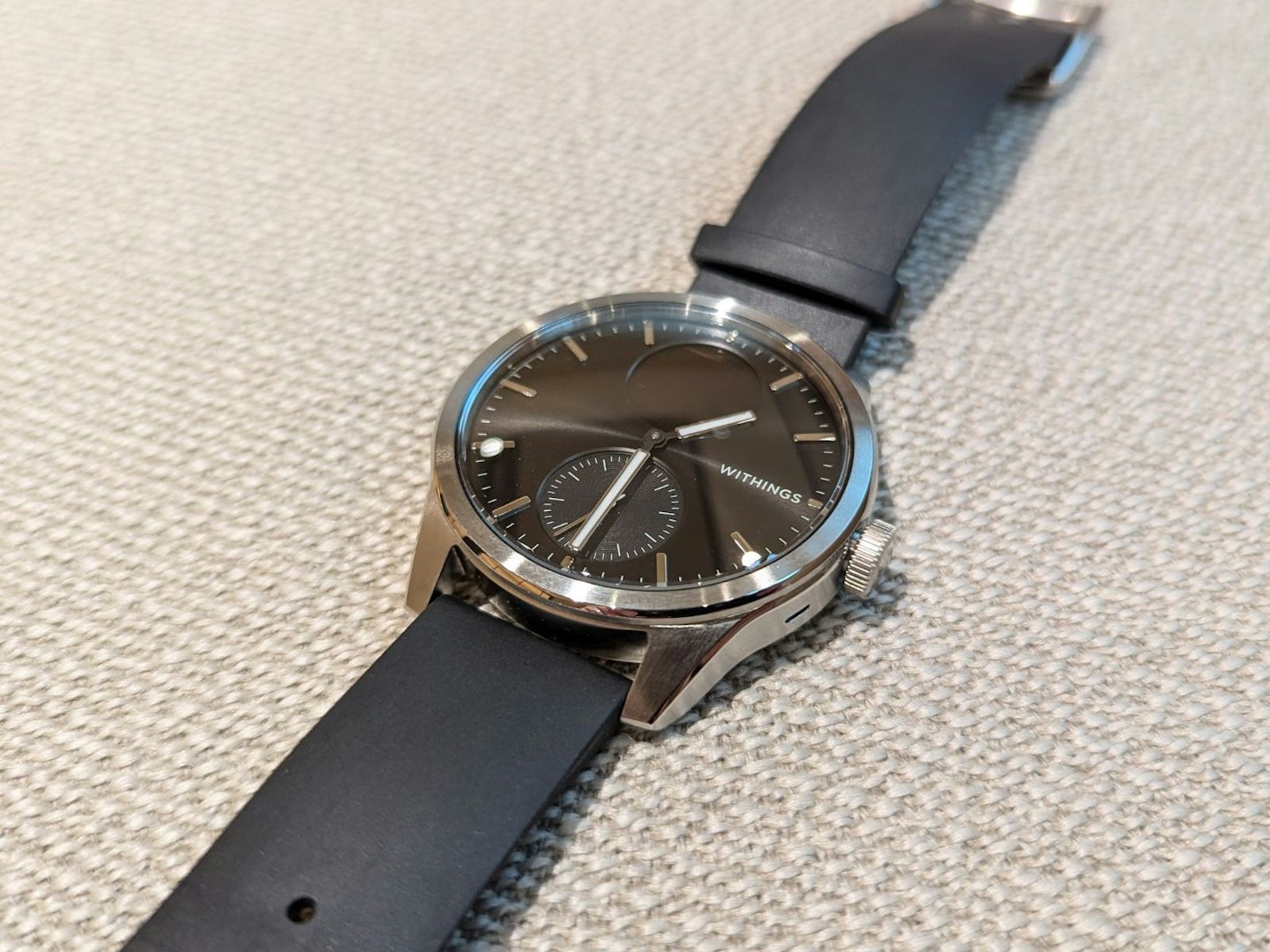
It's a solid set of features, but as I mentioned previously, it doesn't quite match the most comprehensive devices on the market. All-day temperature tracking might be useful in certain circumstances, and I can definitely see the benefit of knowing that I might be falling ill. That could, for example, dissuade me from overdoing it on the exercise front, in case that made things worse. But because I didn't get ill during testing, I can't actually say how well that worked.
Performance
While the ScanWatch 2 claims to be more accurate than ever, I found it varied considerably from the devices I compared it with. For reference, I compared it against both the Garmin Forerunner 255, and the Polar Vantage V3.
General tracking
With general activity tracking, step counts on the Withings ScanWatch 2 were consistently lower than on either the Garmin or the Polar. And by quite a significant margin. The difference between the Garmin and the ScanWatch 2 was 32 per cent, and the Polar device was counting roughly twice the number of steps as the Withings device. The Withings seemed OK at tracking steps while out walking, but missed steps during general movement.
Calorie estimates were also lower on the Withings than on either of the other watches. The differences were smaller here – only a five per cent difference with the Garmin, and a larger 26 per cent difference with the Polar. Interestingly, the ScanWatch estimated a lower basal metabolic rate than the Garmin, which would account for the difference. I also think the Polar may slightly overestimate how much energy I'm expending each day.
Exercise tracking
With exercise tracking, I felt the ScanWatch 2 did struggle a bit. It consistently estimated my average heart rate very differently to the other devices. This was regardless of activity type – walks, high intensity cardio and strength training all delivered a similar result.
On walks, the ScanWatch 2 suggested my average heart rate was higher by around 15 beats per minute compared to the other two devices. Yet strangely, during higher intensity cardio, it would underestimate my heart rate, by as much as 40 beats per minute. It seemed to struggle when my heart was beating quickly. On one occasion, it estimated my maximum heart rate to be 214 beats per minute, during a warm-up. So, I am sceptical of just how accurate the heart rate tracking during exercise actually is.
I've already highlighted that there's no GPS built into the watch. When I wanted to track outdoor activities, I'd have to remember to open the app on my phone as I got started, otherwise it wouldn't track my route properly. When I did remember, accuracy was fairly good (and better than many devices that use connected-GPS), although not as precise as a device with its own GPS. On my usual (roughly) 5.5-km route, the difference in distance tracked was typically less than 50 metres. When I didn't use connected-GPS, the difference was closer to 0.5-km.
Sleep tracking

Sleep tracking on any smartwatch is difficult to gauge. And unlike a lot of devices, the Withings ScanWatch 2 only breaks your sleep into light or deep phases, and doesn't track (or guess) REM sleep.
So, while the ScanWatch 2 didn't match exactly what the Garmin or the Polar said, it was generally in the right ballpark. There were no occasions where I was awake all night, and the watch was telling me I had slept like a baby, for example.
Perhaps most usefully, if I added the REM and deep sleep totals together and compared those with the deep sleep readings on the ScanWatch 2, they were quite often (though not always) within just a few minutes of each other. Light sleep recordings and wakeful periods were more variable. But overall, I felt that there was a reasonable level of consistency between the devices.
The Health Mate app
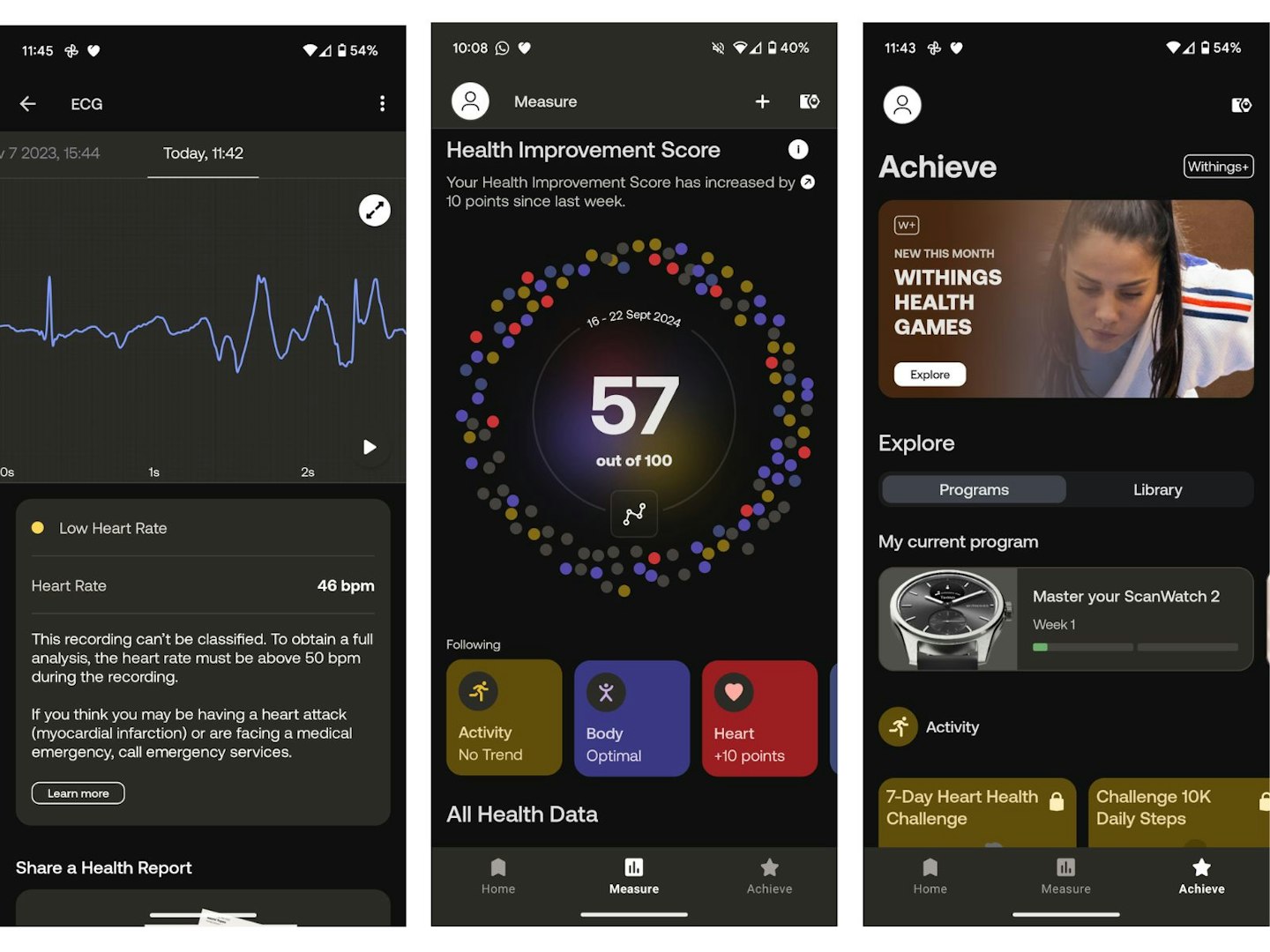
The HealthMate app is where you'll go to get most of your data. It's a comprehensive app, with plenty of support and additional information to explain what all the metrics mean. And if you use any of Withings' other products – such as smart scales – you can track all of it in one place.
The main screen is where you get all the top line data from your latest measurements. Tap on any metric to get a more detailed breakdown of what's going on, and towards the bottom of the screen are your trends from the previous week.
Withings has also introduced Withings+, a paid subscription that offers access to tools such as the Health Improvement Score, as well as activity programs, nutritional guidance, and other informational content. At £10 a month, I felt this was difficult to justify. But I'm delighted that all your metrics are available even if you don't subscribe, unlike with Fitbit Premium.
Battery life
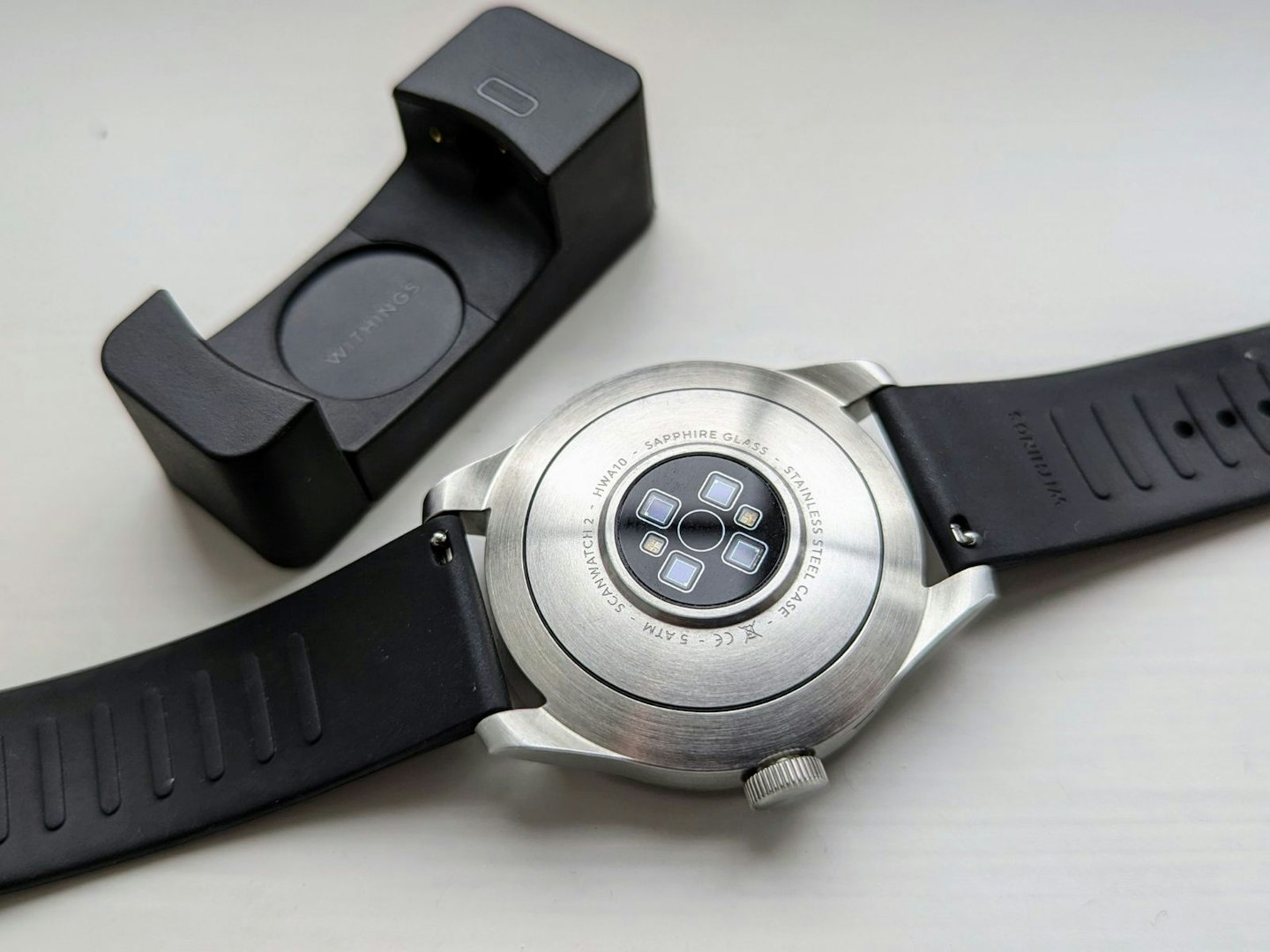
Because the Withings ScanWatch 2 has a small display that isn't always on, battery life is very respectable. Withings itself claims you can get up to 30-days between charges. I found that with relatively heavy usage, the battery dropped from full to around 50 per cent in 10 days. If you have respiration tracking and notifications turned on, for example, you'll likely find the battery won't hit that 30-day mark. But you will still find it lasts far longer than a conventional smartwatch, which typically will struggle to last more than a day or two.
The charging cradle is a slightly odd affair, and unwieldy compared to the charger on the previous ScanWatch generation. It does, however, hold the watch securely to make sure it is actually charging. Which is just as well, because it took me around 40 minutes to charge from 35 per cent to full. Going from a flat battery to full will likely take close to a couple of hours.
Any downsides?
There's a lot that I really like about the ScanWatch 2. The biggest issue was around the fitness tracking performance of the watch. Heart rate data seemed unreliable, overestimating my level of effort during gentle exercise and underestimating it during more strenuous workouts.
There's also relatively little insight compared with other devices. The Forerunner 255 offers features such as Morning Report, VO2 Max estimate, and Training Status. The Polar Vantage V3 will tell your Cardio Load, as well as recommend whether you need to rest (or not) on any given day. Training and recovery information just isn't as in-depth on the Withings, where your Fitness Age is about as detailed as it gets.
Of course, if you aren't overly fussed about those metrics, then their absence on the ScanWatch 2 is less of an issue.
And one other (minor) point of irritation. As my colleague Jack found when he reviewed the Withings ScanWatch Light, the crown on the side of the watch is easy to press against the back of your hand during certain workouts. During press-ups, for example, I found myself often pausing my workout even when I didn't mean to. This is only a problem if you wear the watch on your left hand, but it was irritating, nonetheless.
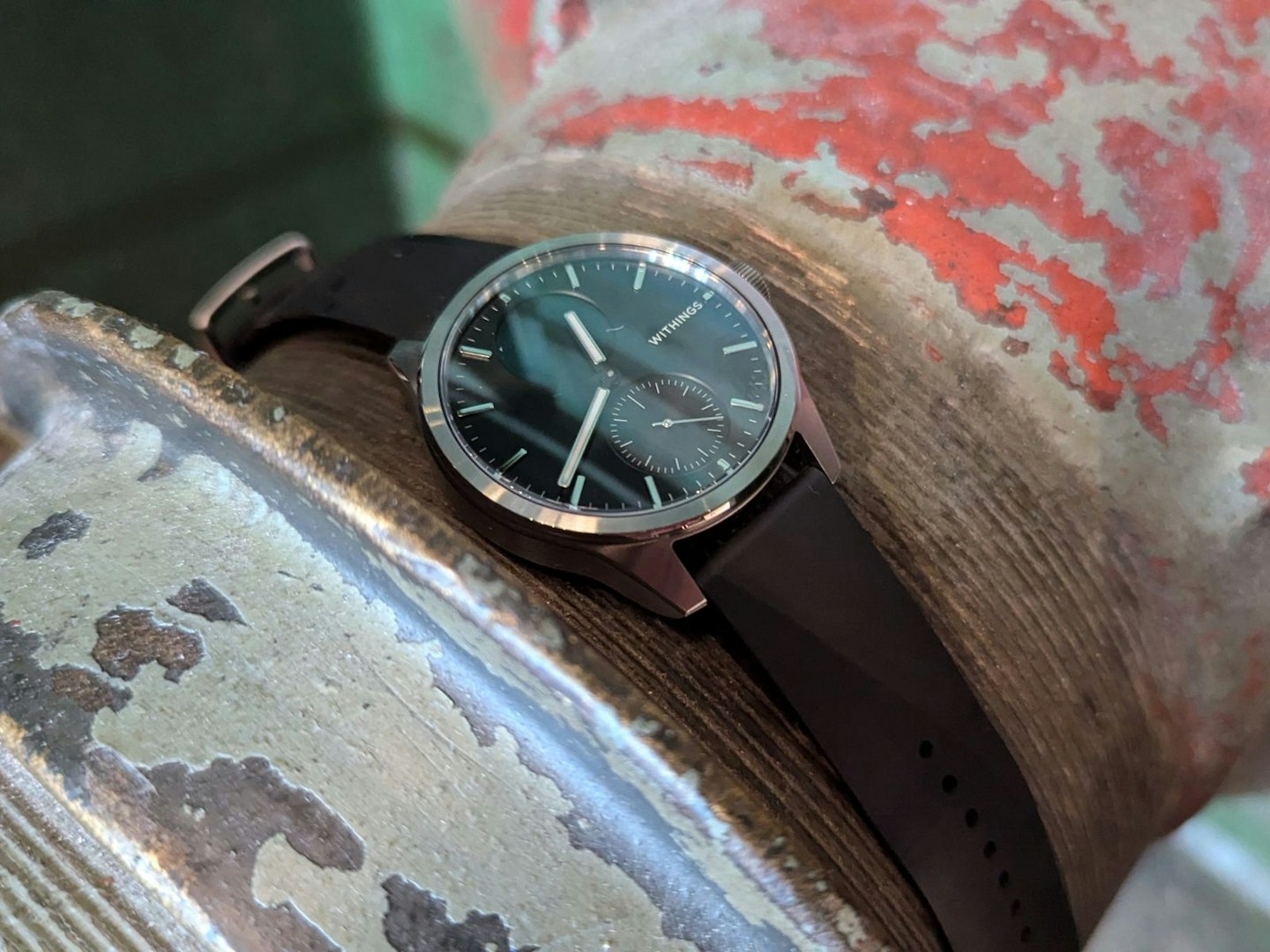
Price and competition
With a current RRP of £319.95, the Withings ScanWatch 2 is much more expensive than traditional fitness trackers such as the Fitbit Charge 6 (RRP £139.99). It's slightly cheaper than a fully-fledged smartwatch like the Apple Watch Series 10 (RRP from £399), and considerably cheaper than a premium multisports watch, such as the Garmin fenix 8 (RRP from £949.99).
The trouble with a hybrid smartwatch is that it doesn't really sit perfectly in any of those niches. Compared with other hybrid devices, it's nearly £100 more expensive than the Withings ScanWatch Light (RRP £229.95) around £50 cheaper than the Pininfarina Senso Sport hybrid smartwatch (RRP £370), and about £40 more than the Garmin vivomove Trend (RRP (£279.99).
In hybrid smartwatch terms, then, this is towards the top end of the market. And given the level of polish, I'd say that's probably fair. It's more feature rich than many alternative hybrid devices, and the design is among the best of the bunch. It does, however, offer less than most more conventional smartwatches.
Who is it for?
Primarily, I'd say this is a health tracker, more than it is a smartwatch or fitness tracker. And with that in mind, I'd say it's most suited to anyone who is mainly interested in monitoring their health and wellbeing.
ECG functionality, blood oxygen monitoring and now temperature measurements mean this is a watch that can let users know if there are signs something isn't right under the hood. And if those same people want to keep track of their sleep and activity levels, then the ScanWatch 2 can give them a ballpark idea of how they are getting on.
It's also a great choice for design-led consumers who are interested primarily in a stylish timepiece but want some of that health and fitness functionality in addition.
Would we recommend it?

Yes, this is a watch I would recommend – for the right users. As I said above, for some people, this will be close to the perfect smartwatch - not too smart, tracks plenty of health metrics, and has a few fitness features. And all while looking like a classic analogue watch.
However, if you are a fitness fanatic who wants the most detailed and accurate metrics, training and recovery support, or features such as built-in GPS, this won't be the watch for you. Similarly, if you want a full-fat smartwatch with (for example) apps, music control, the ability to make and take calls, you'll need to consider something else.
The Withings ScanWatch 2 isn't a watch for everyone – and it doesn't try to be. Instead, it's a shamelessly health-focused device that looks great, and for the right customer, offers almost everything they could need.
More items to consider
The cheaper sibling to the ScanWatch 2, this is smaller, and has fewer features, but is similarly stylish. If style and price are both major considerations, this is well worth considering.
Garmin's effort at a hybrid smartwatch offers plenty of Garmin's usual fitness-tracking metrics, while still being one of the company's most fashionable devices.
A more conventional fitness tracker, the Fitbit Charge 6 has a wide range of fitness tracking tools, at a fraction of the price of the ScanWatch 2. It's not as pretty though.
Who tested it?
The Withings ScanWatch 2 was tested by Steven Shaw, Senior Tech Writer and Reviewer for What's The Best. Steven has a keen interest in health and fitness, so was able to easily integrate using this watch into his normal exercise routine.
Steven has worked with wearables and other smart tech for around a decade, and has written articles covering smartwatches, fitness trackers, mobile phones and plenty of other topics for several years now.
How the product was tested
I wore the ScanWatch 2 as my main watch for a couple of weeks, wearing it daily. During that period, I used the watch to track daily activity, sleep and specific workouts, including strength training, yoga, and both high and low intensity cardio.
I tested the ScanWatch while also wearing A Garmin Forerunner 255, before swapping that watch for a Polar Vantage V3 – both excellent devices. I was then able to compare data from both of these with the ScanWatch 2, to get a sense of how accurate and consistent its readings are. Finally, I regularly used the Withings app to see how well it worked, how quickly data was synced from the watch, and whether it offered any other support or insights for users.
Why should you trust us?
At What's The Best, our mission is to provide accurate and reliable reviews, ensuring our readers receive honest and transparent information about the best technology products available. Anything less would undermine our commitment to being a trusted source of unbiased product information.
Our dedicated in-house writing team comprises experts with extensive experience and a genuine passion for technology. Collectively, we have spent decades testing and writing about tech, leveraging our expertise in all our articles, advice pieces and reviews.
We maintain complete editorial independence and do not accept payment for product reviews. Our writers have full control over their content, ensuring that products are selected based solely on the needs of our readers. While we may earn commissions or other compensation from links on our website, this never affects our product choices. These links enable us to continue offering valuable consumer advice, without compromising the integrity of our reviews.
How we test products at What's The Best
At What's The Best, we ditch the gimmicks and deliver sweat-tested reviews for real fitness enthusiasts. Our team of experienced athletes puts the latest wearables and equipment through their paces in real-world workouts, from running trails to home gyms. We don't just read specs – we use products as they are intended and push our PRs so you know what truly performs.
The result? Unbiased buying advice that gets you moving. We only review the most significant and relevant fitness tech and equipment on the market, saving you time and frustration. Can't find a review for your specific fitness goal? We're constantly adding new products to our ever-growing library, so stay tuned.
Ready to level up your workout with trusted advice? Visit our dedicated page on fitness tech and equipment reviews.
Steven Shaw is a Senior Tech Writer and Reviewer for What's the Best. Steven writes how-to guides, explainers, reviews and best-of listicles covering a wide range of topics. He has several years of experience writing about fitness tech, mobile phones, and gaming.
When Steven isn't writing, he's probably testing a new smartwatch or fitness tracker, putting it through its paces with a variety of strength training, HIIT, or yoga. He also loves putting on a podcast and going for a long walk.
Subscribe to the What's The Best Newsletterto keep up to date with more of the latest reviews and recommendations from the What's The Best team.

